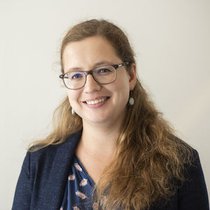In this context, automated driving is a form of transportation, where the responsibility and involvement of the driver is reduced. A complex system performs the act of driving by use of electronics and machinery instead of a human driver. As technologies for semi- and fully automated driving develop, it is imperative for current and potential entities with touch points by such developments to be prepared.
More is understood about the short term and small-scale impacts and less advanced levels of automated driving. For instance, the effects of user interfaces in automated cars on driver behavior and traffic flows is continuously better understood. Yet research into the large-scale and more advanced levels of automated driving is still needed. What are the implications of automated driving on mobility, logistics and residential patterns and spatial-economic structure?
Video: lessons learned during this 5-year project
In the period 2015-2020, the VerDuS SURF STAD consortium studied the effect of automated driving on the transport and location choices of people and companies and on the spatial design of cities and roads. In the video below, researchers and their partners in urban practice look back on the project (Please note: video is in Dutch with English subtitles).
Researchers and their partners in urban practice look back on the STAD project | Video in Dutch with English subtitles
“With automated driving, choice modeling can be applied in a practical view. I saw this as a great opportunity, since automated driving will be so important in the future”
Baiba Pudāne - PhD candidate Transport and Logistics - TU Delft

A general overview of the project
“The Spatial and Transport Impacts of Automated Driving” (STAD) joint research project connected a notably large group of stakeholders which are all implicated in the current and future changes of automated driving. The project explores the implications of automated driving on accessibility, mobility and spatial development in the future.
STAD brings together academic and governmental institutions as well as private companies to collaborate through research in seven sub-projects. Together, they are filling the knowledge gap.
The scope is wide and long term and aims for measures to enable better decision making for investments and planning. The STAD sub-projects are researching the impact of automated driving on:
1) Travel and location choice behavior
2) Freight and logistics applications
3) Infrastructure service networks
4) Urban design and traffic safety
5) Spatial structure and economy
6) Integrated model for the impact of Automated Driving
7) Use cases and demonstrators such as Automated taxis (Delft-Zuid), WePod (Ede Wageningen), Rivium (Rotterdam) and the port of Rotterdam
Rippling Effects of Automated Driving
The STAD project is based on the so-called “ripple model” of automated driving. This theory is a metaphor describing the rippling impact of driving automation across time and including changes in traffic, spatial aspects all the way to economic and societal changes.
The project methods emphasize the role of models and data for specific regional use cases and connections to current and future pilot projects.


